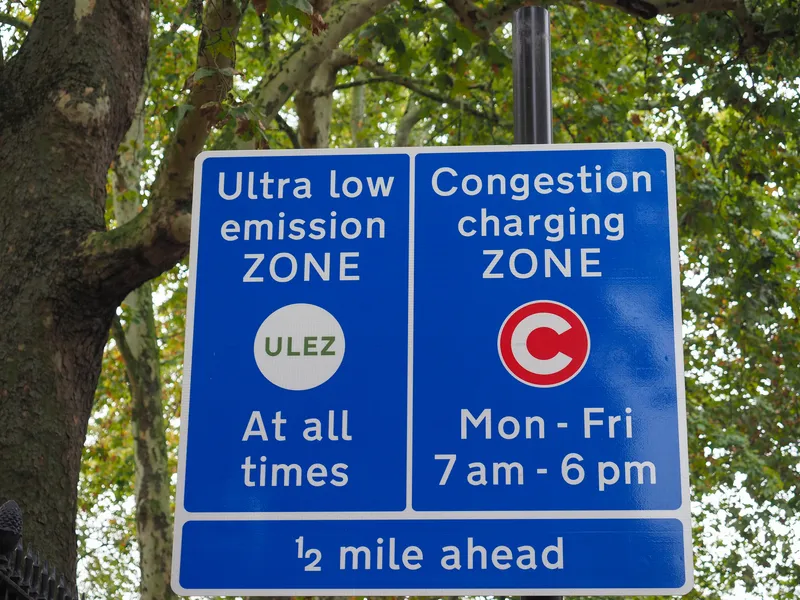A new report published by Allied Market Research, Alternative Fuel and Hybrid Vehicle (AFHV) Market by Alternative Fuel Type, Vehicle Type, and Geography: Global Opportunity Analysis and Industry Forecast, 2014-2022, projects that the world AFHV market is expected to reach US$614 billion by 2022, growing at a CAGR of 12.9 per cent during the forecast period. The passenger vehicle segment is estimated to dominate the market from 2016 to 2022. Asia-Pacific dominated the global market accounting for a market s
October 21, 2016
Read time: 3 mins
A new report published by Allied Market Research, Alternative Fuel and Hybrid Vehicle (AFHV) Market by Alternative Fuel Type, Vehicle Type, and Geography: Global Opportunity Analysis and Industry Forecast, 2014-2022, projects that the world AFHV market is expected to reach US$614 billion by 2022, growing at a CAGR of 12.9 per cent during the forecast period. The passenger vehicle segment is estimated to dominate the market from 2016 to 2022. Asia-Pacific dominated the global market accounting for a market share of around 47 per cent in 2015.
Increase in demand for fuel-efficient vehicles, stringent government laws & regulations toward vehicle emission, and increase in growth of public charging infrastructure drive the AFHV market. Technological advancement in alternative fuel vehicles and increase in government initiatives, such as investment in electric and hybrid buses, are expected to boost the market growth. However, high initial cost of vehicle and low fuel economy hamper the market growth.
AFHV are vehicles that run on various fuel sources such as gaseous fuels (LPG, CNG, and LNG), electric, and other alternative fuels (biofuel, biodiesel, fuel cell, liquid nitrogen, and dimethyl ether). The sale of electric and hybrid vehicles has witnessed a strong upsurge in the recent years. The market penetration of electric and hybrid vehicles is expected to increase in the near future. In addition, the adoption of other alternative fuels, such as CNG, LPG, fuel cell, and dimethyl ether has significantly increased in the recent years. Technological advancement in the AFHV sector is expected to boost the market growth in developing economies such as LAMEA and Asia-Pacific.
The passenger vehicles segment is projected to maintain its lead in the near future due to increase in sales of electric vehicles and advent of new technological advancements. The electric two-wheeler industry has witnessed strong uptake owing to stringent emission laws, lightweight components, low cost of vehicle, and increase in public charging infrastructure. Increase in demand for fuel-efficient and adoption of zero emission technologies in commercial vehicles in the developed economies of North America and Europe has boosted the market growth.
Asia-Pacific accounted for majority of the revenue in 2015, and is expected to maintain its dominance till 2022, attributing to increase in public awareness toward fuel-efficient vehicles, increase in adoption of electric vehicles, and enforcement of laws and regulations by government authorities regarding vehicle emissions. Moreover, rise in public charging infrastructure units propel the growth of the Asia-Pacific AFHV market.
Asia-Pacific is projected to be the fastest growing region throughout the analysis period. China is expected to dominate the Asia-Pacific region in terms of sales of passenger cars segment. This is attributed to increase in sales of electric passenger cars & two wheelers, implementation of stringent vehicular emission norms, rise in awareness of fuel-efficient vehicles, and growth in buying power of consumers in the emerging markets such as India, Malaysia, and China to adopt AFHV. Technological advancements for developing low-cost, fuel-efficient vehicles and increase in public charging infrastructure in these nations offer lucrative opportunities to the players in the AFHV market.
Increase in demand for fuel-efficient vehicles, stringent government laws & regulations toward vehicle emission, and increase in growth of public charging infrastructure drive the AFHV market. Technological advancement in alternative fuel vehicles and increase in government initiatives, such as investment in electric and hybrid buses, are expected to boost the market growth. However, high initial cost of vehicle and low fuel economy hamper the market growth.
AFHV are vehicles that run on various fuel sources such as gaseous fuels (LPG, CNG, and LNG), electric, and other alternative fuels (biofuel, biodiesel, fuel cell, liquid nitrogen, and dimethyl ether). The sale of electric and hybrid vehicles has witnessed a strong upsurge in the recent years. The market penetration of electric and hybrid vehicles is expected to increase in the near future. In addition, the adoption of other alternative fuels, such as CNG, LPG, fuel cell, and dimethyl ether has significantly increased in the recent years. Technological advancement in the AFHV sector is expected to boost the market growth in developing economies such as LAMEA and Asia-Pacific.
The passenger vehicles segment is projected to maintain its lead in the near future due to increase in sales of electric vehicles and advent of new technological advancements. The electric two-wheeler industry has witnessed strong uptake owing to stringent emission laws, lightweight components, low cost of vehicle, and increase in public charging infrastructure. Increase in demand for fuel-efficient and adoption of zero emission technologies in commercial vehicles in the developed economies of North America and Europe has boosted the market growth.
Asia-Pacific accounted for majority of the revenue in 2015, and is expected to maintain its dominance till 2022, attributing to increase in public awareness toward fuel-efficient vehicles, increase in adoption of electric vehicles, and enforcement of laws and regulations by government authorities regarding vehicle emissions. Moreover, rise in public charging infrastructure units propel the growth of the Asia-Pacific AFHV market.
Asia-Pacific is projected to be the fastest growing region throughout the analysis period. China is expected to dominate the Asia-Pacific region in terms of sales of passenger cars segment. This is attributed to increase in sales of electric passenger cars & two wheelers, implementation of stringent vehicular emission norms, rise in awareness of fuel-efficient vehicles, and growth in buying power of consumers in the emerging markets such as India, Malaysia, and China to adopt AFHV. Technological advancements for developing low-cost, fuel-efficient vehicles and increase in public charging infrastructure in these nations offer lucrative opportunities to the players in the AFHV market.









